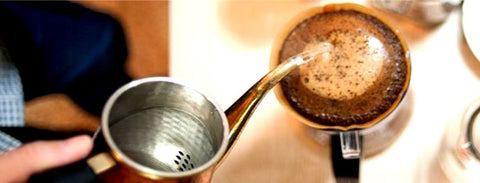You may have a favorite diner in your own town, or perhaps there is one you visit each year while on vacation. The classic diner offers more than traditional dishes; it is especially recognized for its desserts and coffee. Even if the coffee is not outstanding, there is something deeply satisfying about cradling a real diner mug and sipping away at one’s leisure. This, believe it or not, is all about the mug itself.
Even if you do not know its history, there is something about the true, classic coffee mug that resonates with us deeply. We’ve seen old photographs of men gathering at the local diner and chatting away about the politics of their day, mug in hand; or waitresses in short dresses and aprons smiling a welcoming smile as they pour coffee in white mugs. Perhaps it is instinct, or some innate memory of the past, transmitted from one generation to the next, but we know that mug and we know that coffee.
You will recognize it at once: Simple, white porcelain, narrower in the middle, thick-walled and comfortably heavy even when empty. It is often imitated now, but the true original was called a Victor Mug and it was made in the United States.
Beverage vessels resembling a mug were used for the first time in the first coffee houses of Constantinople, around 1475. These were usually made of wood. Porcelain mugs were later imported from China. It would take 470 years before the classic diner mug would appear on our tables. Victor, New York was its birthplace, during the last years of the Second World War.
The Victor Insulator Company, the oldest insulator producer in North America, specialized in the fabrication of ceramic insulators for telegraph lines. Times were uncertain, but the company managers recognized the value of its employees and devised a way to use the materials at hand in new applications that would ensure continued work and wages for its crew. The context was ideal to inspire the high-standards of the mug design, which was built to military standards. It had to withstand rough conditions, resist tipping (as when used on military ships) and breakage (hence the thickness).
But there is one tell-tale characteristic of the new mug design that was utterly revolutionary at the time, and if you ever come across a true Victor Mug, this is how you can verify its authenticity. The bottom was rubbed against wet rubber prior to firing in the kiln. This produced the characteristic rough ring around the underside and prevented the mug from sliding on smooth surfaces.
The insulating properties of ceramic were a welcome bonus for the hot beverage. Incidentally, its ability to withstand over 760,000 volts of electricity is the very characteristic that helps the coffee stay warmer longer in the mug.
The original Victor Mug is no longer in production, but the design is an industry standard in what is commonly known as the “Diner Mug.”





Comments (0)
There are no comments for this article. Be the first one to leave a message!